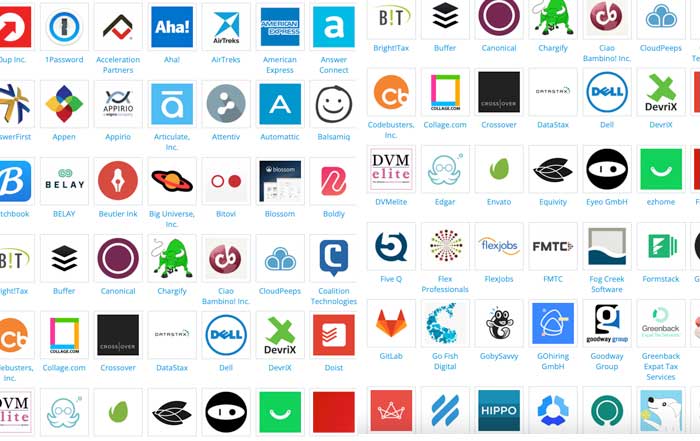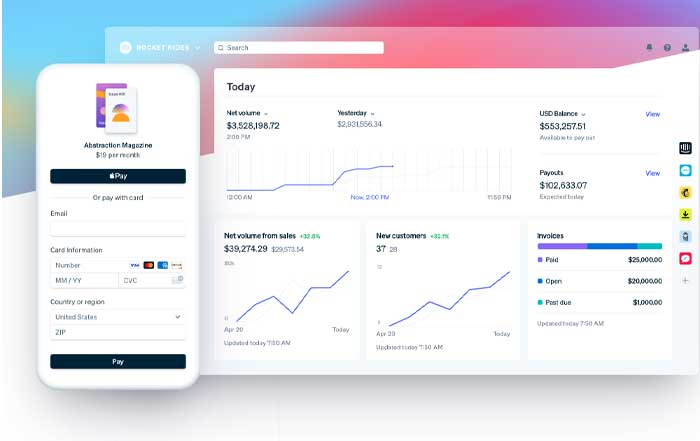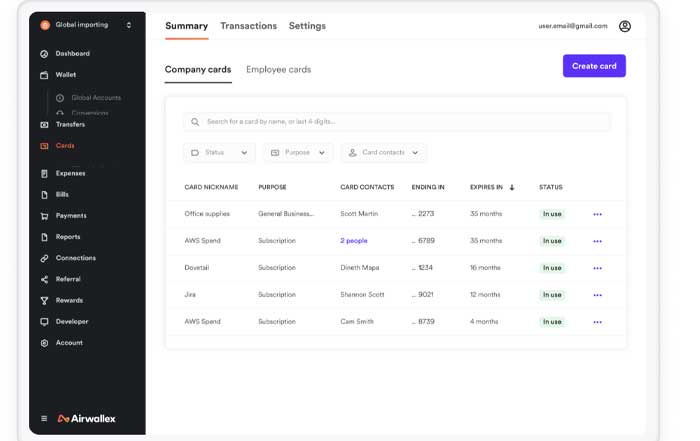The term Big Data has become more than a buzzword; it is the foundation on which global businesses design strategies, build customer loyalty, and compete in highly volatile markets. From financial institutions in New York to startups in Singapore and manufacturing giants in Germany, organizations now recognize that the capacity to collect, analyze, and leverage massive datasets defines their ability to innovate and grow. What was once seen as a complex and inaccessible field requiring significant infrastructure investments has now evolved into a critical business enabler, powered by cloud platforms, artificial intelligence, and advanced analytics.
For businesses seeking to understand how to incorporate Big Data into their operational DNA, the opportunities are immense. It is not just about storing information; it is about transforming streams of raw data into actionable insights that reshape how products are designed, how markets are understood, and how risks are mitigated. Publications such as FinanceTechX emphasize that data-driven decision-making is no longer optional but essential for survival in industries spanning fintech, healthcare, retail, energy, and beyond.
The Strategic Value of Big Data
The strategic value of Big Data lies in its ability to bridge the gap between consumer expectations and business delivery. Companies like Amazon, Alibaba, and Netflix have demonstrated how predictive analytics can personalize experiences, while financial institutions use advanced algorithms to detect fraud and ensure compliance. Beyond consumer-facing industries, manufacturing leaders such as Siemens and General Electric are applying data analytics to optimize production processes, predict equipment failures, and reduce operational costs.
Big Data also plays an increasingly important role in the global economy. Organizations across Europe, North America, and Asia are using data to navigate uncertainties created by geopolitical shifts, inflationary pressures, and rapid technological change. By combining real-time market data with long-term forecasting models, businesses are better equipped to anticipate downturns and capitalize on emerging opportunities. Learn more about the intersection of economy and technology.
Big Data and Fintech Transformation
One of the most profound transformations powered by Big Data has occurred in the fintech sector. From London to Singapore, fintech startups are using massive datasets to reimagine how financial services are delivered. Risk scoring, loan approvals, and investment management are now driven by algorithms that can process thousands of data points per second, ensuring faster and more inclusive access to financial services.
Companies like Stripe, Revolut, and Ant Group leverage advanced analytics to offer tailored financial solutions to both businesses and consumers. Moreover, the integration of AI with Big Data is pushing the boundaries of innovation in this sector. For instance, robo-advisors can provide real-time portfolio adjustments by analyzing global market trends, while digital banks rely on predictive analytics to forecast customer needs before they arise. To explore more about these innovations, visit FinanceTechX Fintech Insights.
In emerging economies, particularly in Africa and South America, Big Data is enabling mobile banking and microfinance platforms to extend financial services to previously underserved populations. By analyzing mobile usage patterns and payment histories, these platforms assess creditworthiness in ways that traditional banks never could.
Big Data in Customer Experience Management
A central benefit of Big Data is its ability to enhance customer experience. In today’s hyper-competitive markets, businesses cannot afford to treat customers as anonymous entities. By leveraging data analytics, companies can track consumer behavior across multiple channels, predict future preferences, and design highly personalized marketing campaigns.
For example, Spotify and Apple Music use listening data to curate personalized playlists, creating a sense of intimacy and loyalty that extends beyond traditional customer relationships. Retailers like Walmart and Zara are investing heavily in predictive inventory management systems that ensure the right products are available at the right time.
The same approach applies in the B2B sector, where companies analyze transactional data to tailor solutions for corporate clients. Personalized experiences not only improve satisfaction but also strengthen long-term relationships, turning customers into advocates. Businesses looking to implement such strategies should consider the broader implications of customer-centric innovation, as discussed in FinanceTechX Business Strategy.
Big Data Applications Across Industries
Healthcare
Medical imaging analysis, patient histories, genomic data for personalized treatments and disease tracking
Retail
Inventory management, pricing optimization, customer behavior analysis, and personalized shopping experiences
Fintech
Risk scoring, fraud detection, algorithmic trading, and personalized financial services delivery
Energy
Smart grid optimization, renewable energy forecasting, carbon emission tracking and load balancing
Transportation
Route optimization, demand forecasting, fuel efficiency analysis, and autonomous vehicle development
Manufacturing
Predictive maintenance, quality control, supply chain optimization, and production efficiency
Data-Driven Decision Making in Global Markets
The modern business environment is marked by uncertainty, from fluctuating energy prices to unpredictable geopolitical developments. For leaders navigating these complex conditions, data-driven decision-making is the most reliable compass. Big Data allows organizations to simulate multiple scenarios, anticipate disruptions, and plan adaptive strategies.
In supply chain management, companies like Maersk and DHL analyze logistics data to minimize delays and optimize shipping routes. In retail, Big Data enables dynamic pricing models that respond instantly to market fluctuations. In finance, investment firms rely on sophisticated algorithms to identify trends in stock markets across New York, London, Frankfurt, and Tokyo. Gain more perspective on these dynamics at FinanceTechX Stock Exchange Insights.
These practices are not limited to large corporations. Mid-sized and small enterprises are increasingly turning to cloud-based Big Data platforms that democratize access to advanced analytics. This has leveled the playing field, enabling ambitious startups in Canada, Australia, or India to compete with established players in the global market.
Big Data and Risk Management
Risk management has always been a cornerstone of business strategy, but in 2025, it has evolved into a highly data-driven practice. Companies now face multifaceted risks ranging from cyberattacks and regulatory changes to climate events and sudden supply chain disruptions. Big Data allows businesses to not only react to risks but also predict them with remarkable accuracy.
In the financial sector, JPMorgan Chase, Goldman Sachs, and Barclays rely on Big Data analytics to monitor market volatility and detect anomalies that could indicate fraudulent activity. Sophisticated algorithms sift through vast volumes of transaction records in real time, identifying irregularities that human auditors would miss. This predictive capability is particularly critical in crypto markets, where rapid fluctuations demand near-instant analysis. For additional insights into digital assets and security challenges, readers can explore FinanceTechX Crypto Analysis and FinanceTechX Security Perspectives.
Beyond finance, manufacturers in Germany and Japan analyze sensor data from industrial machinery to detect early signs of mechanical failure. By predicting breakdowns before they occur, they can prevent costly downtime and ensure worker safety. In the energy sector, utility providers apply data-driven models to forecast demand fluctuations and adjust production capacity accordingly, reducing both financial losses and environmental impact.
Risk management is also deeply intertwined with regulatory compliance. Data analytics helps organizations operating across multiple jurisdictions ensure that they meet local requirements, whether related to financial reporting, consumer privacy, or environmental sustainability. In regions such as the European Union, where frameworks like the General Data Protection Regulation (GDPR) continue to influence global standards, data-driven compliance has become indispensable.
Artificial Intelligence and Big Data: A Symbiotic Relationship
The synergy between artificial intelligence and Big Data defines much of the innovation landscape in 2025. AI thrives on large datasets, while Big Data analytics is supercharged by machine learning and neural networks that uncover patterns invisible to traditional analysis methods.
Google Cloud AI, Microsoft Azure AI, and Amazon Web Services have built entire ecosystems around this relationship, enabling companies to run predictive models, automate processes, and deliver hyper-personalized experiences. Startups in the United Kingdom and Singapore leverage these platforms to scale quickly without requiring massive in-house infrastructure investments. For a deeper exploration of AI’s transformative power, visit FinanceTechX Artificial Intelligence Insights.
One of the most impactful applications of this relationship is in healthcare. Hospitals in Canada and South Korea analyze patient records, genetic data, and clinical trial results to personalize treatment plans and accelerate drug discovery. AI-powered Big Data tools reduce diagnostic errors, lower costs, and ultimately save lives.
In retail, AI-driven analytics interpret consumer behavior with incredible precision, powering recommendation engines, optimizing pricing, and even predicting future product trends. In logistics, AI models analyze delivery routes, fuel costs, and traffic conditions to enhance efficiency. The ability to integrate Big Data with AI provides organizations with real-time decision-making capabilities that were unimaginable just a decade ago.
Big Data and Sustainability
The role of Big Data extends beyond profitability; it is becoming an essential driver of sustainability in the global economy. As consumers, investors, and governments increasingly demand responsible business practices, organizations are turning to data analytics to measure and reduce their environmental footprint.
Tesla, Siemens Energy, and Ørsted are applying Big Data models to optimize renewable energy production and storage, ensuring that resources such as wind and solar power are efficiently harnessed. Similarly, logistics companies track carbon emissions across global supply chains, identifying opportunities to reduce waste and improve sustainability performance. Businesses seeking to align with this new wave of responsible innovation can find deeper coverage at FinanceTechX Green Fintech and FinanceTechX Environment.
Urban planners in cities like Stockholm, Singapore, and New York rely on data-driven models to design smarter transportation systems, reduce traffic congestion, and enhance air quality. Farmers in Africa and South America use satellite imagery combined with weather data to manage crops more efficiently, improving food security while reducing environmental impact.
For investors, sustainability-linked Big Data analytics provide transparent insights into corporate practices, helping them identify companies that are genuinely committed to environmental, social, and governance (ESG) goals. By integrating ESG metrics into financial analysis, businesses and investors alike are aligning profitability with long-term planetary health.
Big Data and the Future of Jobs
One of the most frequently debated aspects of Big Data adoption is its impact on the job market. While automation and data-driven decision-making have replaced certain routine tasks, they have also created entirely new roles that demand advanced skills.
In 2025, demand for data scientists, machine learning engineers, and data governance specialists has surged worldwide. Countries like Germany, Canada, and India are investing heavily in education programs designed to prepare future generations for these careers. Employers are increasingly prioritizing candidates with hybrid skills, blending technical expertise with business strategy and regulatory understanding. For job seekers and employers navigating this evolving market, FinanceTechX Jobs and Careers provides critical updates and guidance.
The rise of remote work has further expanded opportunities, enabling data professionals from South Africa or Brazil to collaborate with companies in the United States or Europe. Digital platforms and global hiring marketplaces now allow businesses to access a global pool of talent, fostering innovation and diversity.
However, this transformation also demands continuous upskilling. Business leaders recognize that investing in workforce development is essential to remain competitive. Training programs focused on advanced analytics, cybersecurity, and ethical data management are becoming core elements of corporate strategies.
-
Big Data and Cybersecurity
As organizations become increasingly reliant on digital infrastructure, the need for robust cybersecurity strategies has never been more urgent. In 2025, Big Data is playing a decisive role in protecting businesses against evolving threats. Cybercriminals exploit vulnerabilities with sophisticated techniques, often targeting financial institutions, healthcare systems, and government agencies. To counter these risks, companies are deploying advanced analytics that detect anomalies and predict malicious activity before it can cause damage.
Global leaders such as IBM Security, CrowdStrike, and Palo Alto Networks have developed platforms that leverage Big Data to monitor millions of endpoints in real time. By processing massive volumes of network logs, emails, and user behavior data, these systems identify suspicious patterns and issue immediate alerts. Financial service providers in regions like the United Kingdom and Singapore rely on such tools to protect sensitive client information and ensure regulatory compliance. More in-depth perspectives can be found in FinanceTechX Security and FinanceTechX Banking Insights.
Moreover, predictive analytics empowers organizations to anticipate where the next attack might occur. By analyzing dark web activities, phishing campaigns, and vulnerability disclosures, businesses can preemptively secure their systems. The integration of AI with Big Data has further elevated cybersecurity, enabling adaptive defense mechanisms that evolve in response to new threats. This proactive stance is critical for businesses operating across borders, where attacks can originate from any region and target multiple layers of operations.
Big Data and Global Competitiveness
In a globalized economy, the ability to harness Big Data has become a decisive factor in maintaining competitiveness. Companies that effectively leverage analytics are outperforming those that rely on intuition or outdated methods. Nations are also competing for leadership in this space, with the United States, China, and the European Union investing heavily in data infrastructure and regulatory frameworks.
The United States remains at the forefront, with Silicon Valley firms driving innovation in cloud-based analytics and AI-driven platforms. China, with companies like Tencent and Alibaba, is rapidly advancing its capabilities, particularly in e-commerce and fintech. Meanwhile, the European Union focuses on balancing innovation with stringent privacy and ethical standards, creating a regulatory environment that influences global norms.
For businesses in smaller economies, Big Data offers a pathway to leapfrog traditional barriers to entry. Startups in Kenya, Vietnam, and Chile are using data analytics to compete with established multinationals, offering specialized products tailored to niche markets. Access to cloud computing and international talent pools has democratized innovation, ensuring that competitive advantage is no longer limited to geographic or financial dominance. Readers interested in the broader global perspective can find detailed coverage at FinanceTechX World and FinanceTechX News.
Big Data Applications Across Industries
The benefits of Big Data extend to virtually every industry, reshaping how value is created and delivered.
In healthcare, hospitals analyze medical imaging, patient histories, and genomic data to deliver personalized treatments. Public health authorities in countries such as Australia and South Korea use Big Data to track disease outbreaks and coordinate rapid responses.
In retail, companies apply predictive analytics to inventory management, ensuring supply chains align with consumer demand. Firms like Target and Tesco use purchase history data to optimize pricing and promotions, improving both profitability and customer satisfaction.
In transportation, ride-hailing services such as Uber and Grab rely on Big Data to balance supply and demand, minimize waiting times, and optimize routes. Airlines analyze booking patterns, fuel costs, and maintenance schedules to improve efficiency.
In energy and utilities, smart grids in countries like Norway and Denmark apply Big Data to balance load distribution, prevent blackouts, and reduce carbon emissions. By analyzing consumption data, energy providers offer tailored solutions to both industrial and residential customers.
In education, universities leverage data-driven insights to design adaptive learning programs, identifying where students need support and how curricula can be adjusted for improved outcomes. Coverage of this evolving landscape is explored at FinanceTechX Education.
The Ethical Dimension of Big Data
While the benefits of Big Data are extensive, its rapid adoption has raised critical ethical questions. Issues of privacy, surveillance, and bias in algorithmic decision-making dominate debates among regulators, academics, and business leaders. The challenge lies in striking a balance between leveraging insights for growth and safeguarding individual rights.
Governments across Europe, the United States, and Asia are implementing stricter data governance policies. Frameworks such as the GDPR in Europe and the California Consumer Privacy Act (CCPA) in the United States have set benchmarks for responsible data use. Businesses that fail to comply face not only financial penalties but also reputational damage.
The role of ethical data practices extends to AI applications as well. Biased datasets can lead to discriminatory outcomes in hiring, lending, or law enforcement. Companies that prioritize transparency, accountability, and fairness are building trust with consumers and regulators alike. This trend is especially significant in 2025, as businesses increasingly recognize that ethical data management is both a moral obligation and a competitive advantage.
The Future Outlook: Big Data Beyond 2025
Looking forward, the role of Big Data will only intensify as technologies such as quantum computing, edge computing, and 5G networks reshape the digital landscape. Quantum computing, in particular, promises to process datasets of unprecedented scale and complexity, opening possibilities for breakthroughs in pharmaceuticals, climate modeling, and financial forecasting.
Edge computing will complement Big Data by allowing organizations to analyze information closer to its source, reducing latency and enhancing efficiency in industries such as autonomous vehicles and real-time healthcare monitoring. Meanwhile, 5G networks will accelerate the flow of data, enabling new applications in immersive technologies, smart cities, and global commerce.
The convergence of Big Data with sustainability, AI, and cybersecurity will redefine business priorities. Organizations that embrace this convergence will not only strengthen their bottom line but also contribute to global resilience and shared prosperity. Businesses preparing for this future should stay informed through resources like FinanceTechX Business and FinanceTechX Economy.
Big Data as a Core Business Imperative
Now Big Data has firmly established itself as a core driver of business transformation across sectors and regions. Its benefits are evident in improved decision-making, risk mitigation, customer engagement, sustainability, and competitive advantage. What sets successful organizations apart is not simply their access to data but their ability to translate insights into action, aligning technology with strategy and values.
From multinational corporations to agile startups, the message is clear: embracing Big Data is no longer optional but imperative. By combining technological innovation with ethical responsibility, businesses can position themselves for sustainable growth in an increasingly complex global environment. For those seeking to remain at the forefront of these developments, FinanceTechX continues to provide expertise, analysis, and trusted perspectives that connect data-driven innovation with real-world impact.










